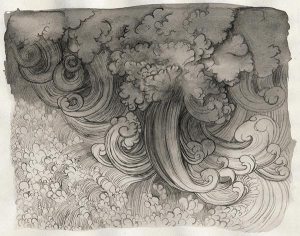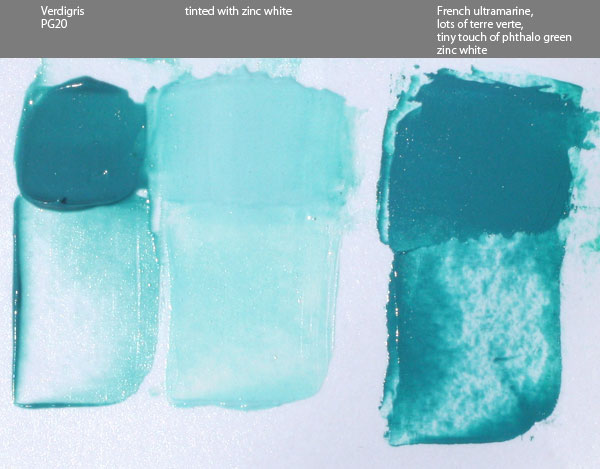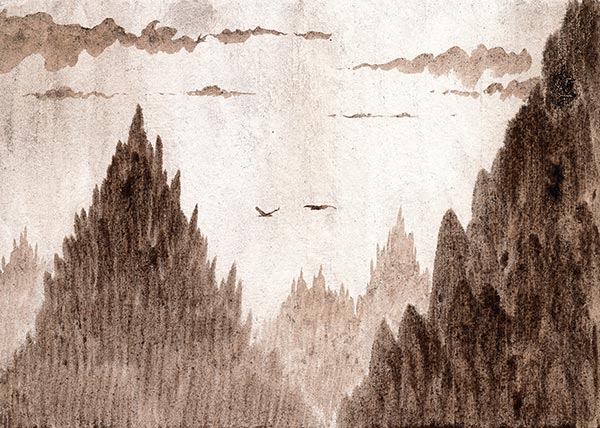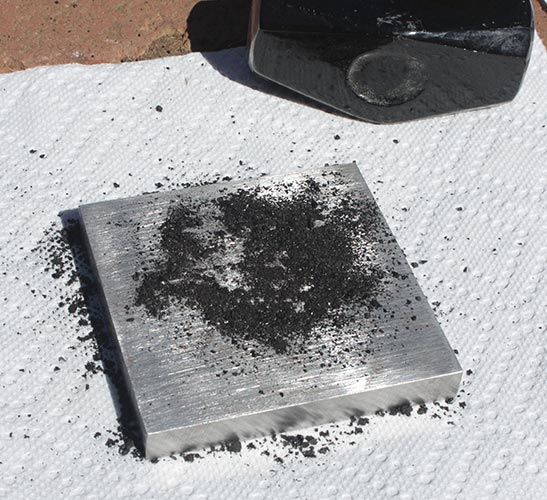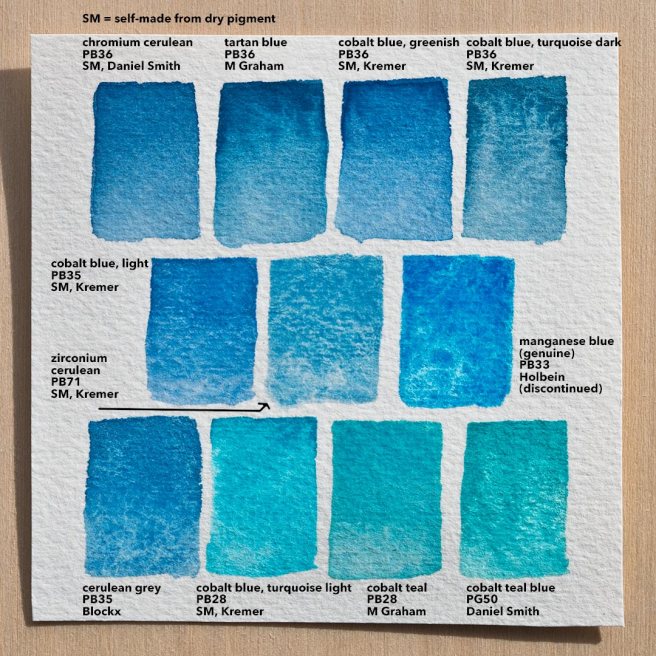
I was asked recently about zirconium blue, PB71, which is called zirconium cerulean by Kremer Pigments because of its similarity to cerulean. Unlike normal cerulean it doesn’t contain cobalt, so I presume that it’s less toxic, but it does cost about the same or a little more.
In the chart above zirconium blue is in the center, surrounded by all of the watercolor ceruleans (both PB35 and PB36) that I have access to and also some cobalt teals that I thought would be similar, plus manganese blue. The tartan blue was a limited edition variety of cerulean that I don’t think is made anymore, and the pigment for manganese blue isn’t made anymore either.
Zirconium blue is basically a heavily granulating turquoise or greenish teal. Some of the ceruleans and cobalt teals granulate more than others, but zirconium blue is only matched by genuine manganese blue. It seems to be a bit weaker tinting than the other paints here. The lifting is partly affected by the medium used to make the paint, but what I made here does lift very well, as does the “cobalt blue light” (actually cerulean) seen at the center left and the cerulean grey from Blockx in the bottom left.
The medium that I used to make each of the self-made paints was an experiment. Each time I make watercolor medium it’s a little different to explore how changes in proportions affect the paint. This time I used 5.5 grams of gum arabic powder dissolved into about 12-13ml of water that was heated to 140-150°F (60-65°C). Then about 2-3ml of light colored honey and 1-2ml of glycerin was added, which is less of both of those than I normally use. After shaking it gently but thoroughly 4 drops of synthetic ox gall from QoR were added. As a preservative I dipped the end of a brush handle into a bottle of clove oil, getting just a thin coating of it on the tip, and I put that into the medium. So far the medium seems to be working well. All of the self-made paints were just made justing a palette knife to combine the pigment with medium. Update- the paint was a little dry, so I approximately doubled the amount of glycerin.
